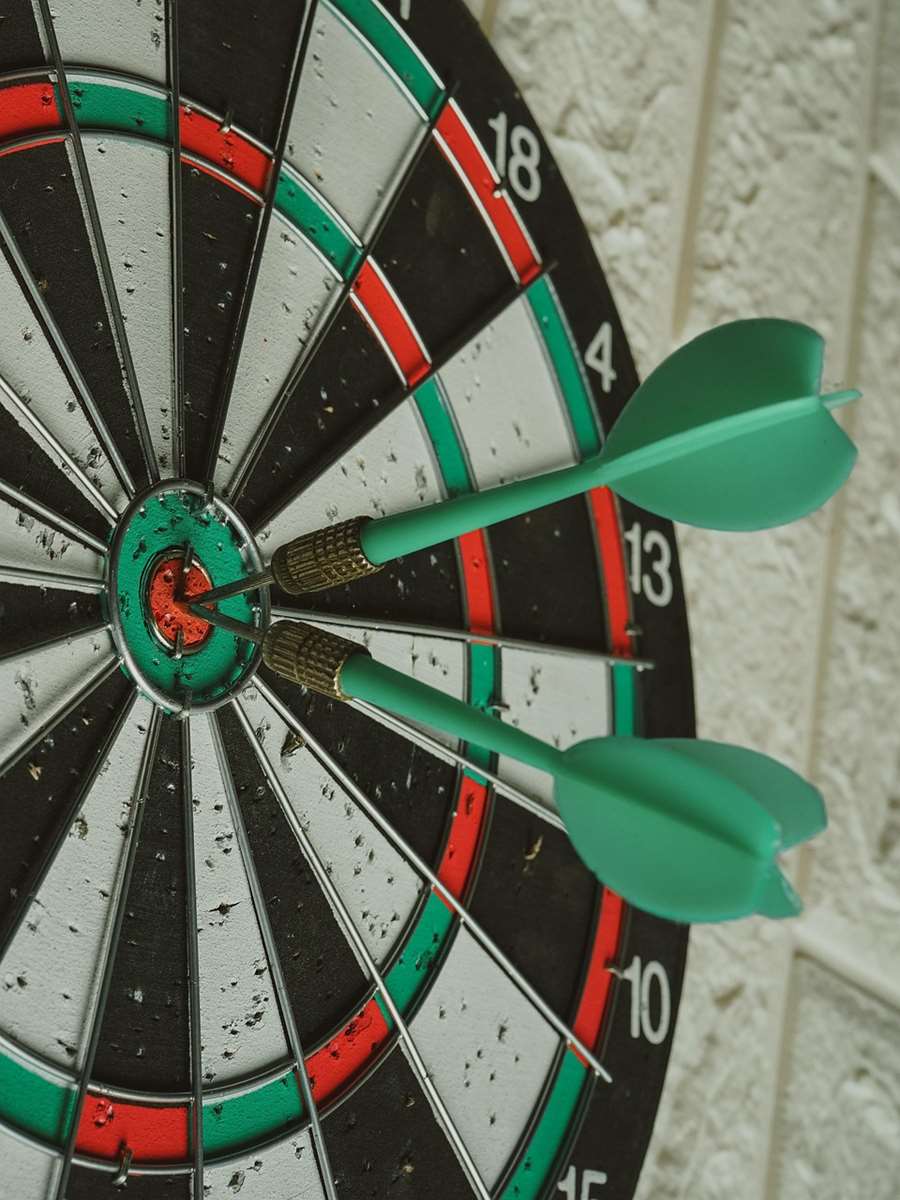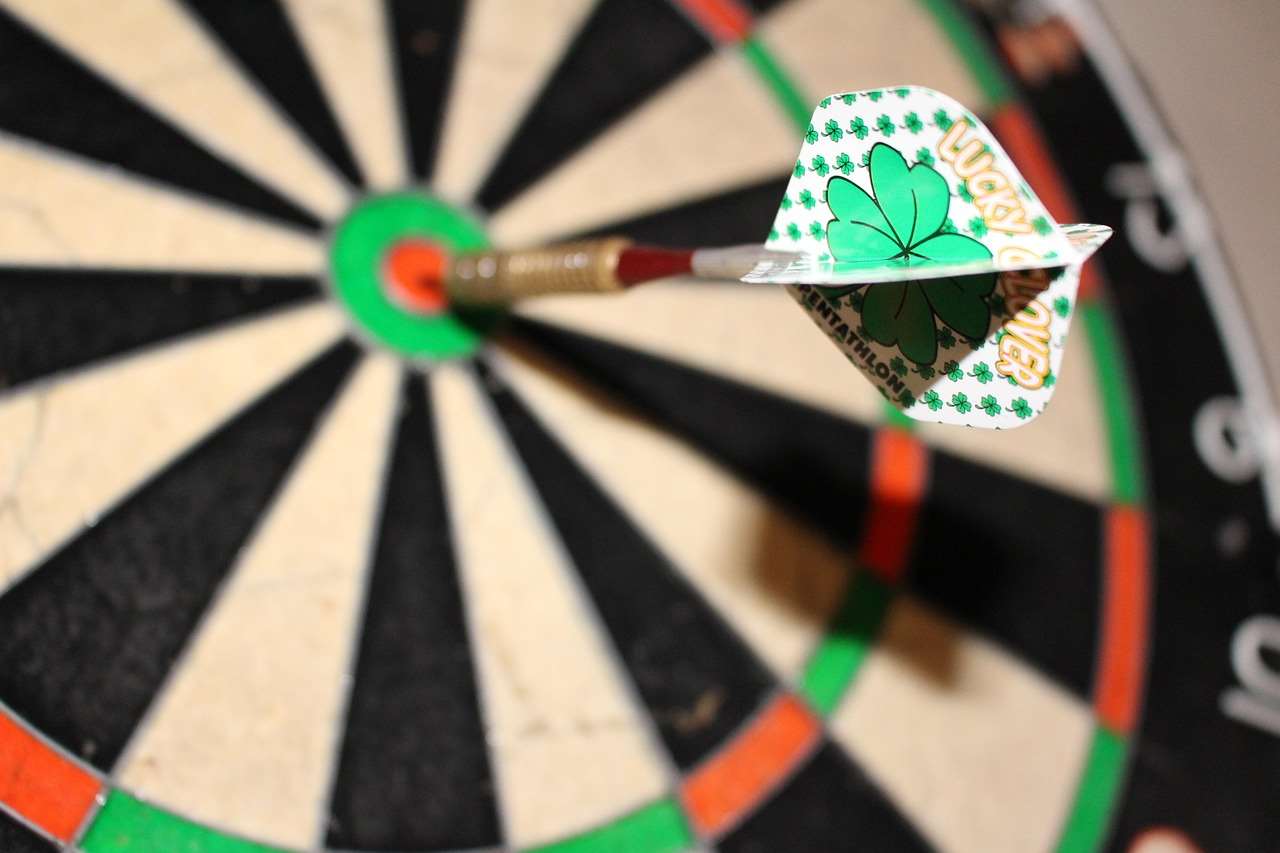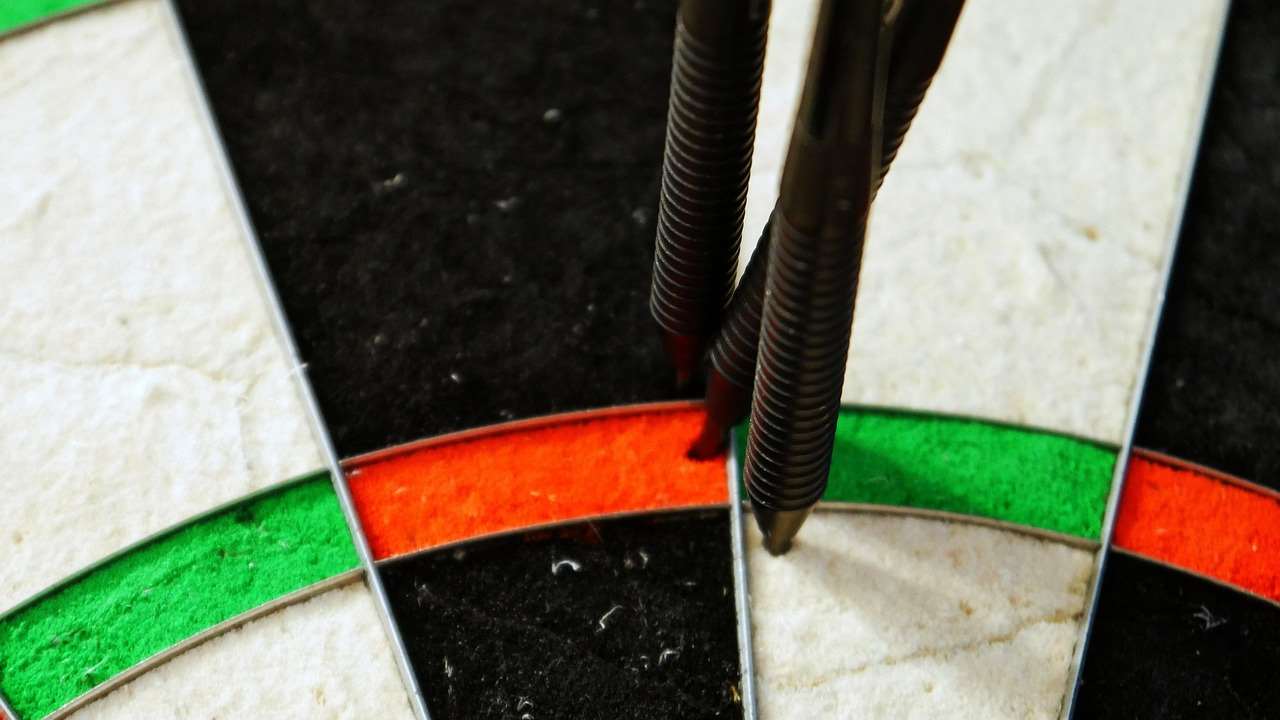Understanding darts terminology: ‘Finishing’ is crucial for any player aiming to improve their game, as it refers to the precise art of reducing your score to zero, typically ending with a double. This article will explore the common finishes, strategic considerations, and practical tips to master the art of closing out a leg of darts.
⚠️ Still Using Pen & Paper (or a Chalkboard)?! ⚠️
Step into the future! The Dart Counter App handles all the scoring, suggests checkouts, and tracks your stats automatically. It's easier than you think!
Try the Smart Dart Counter App FREE!Ready for an upgrade? Click above!
Decoding Darts Terminology: The Art of ‘Finishing’
The term “darts terminology: ‘Finishing’” encompasses the strategic planning and execution required to successfully end a game of darts, typically 501 or 301. It involves calculating the remaining score and selecting the optimal combination of darts to reach zero, always ending on a double or the bullseye (which counts as double 25). A good finish isn’t just about hitting the required numbers; it’s about setting yourself up for success with each throw.

Why is Finishing so Important?
While scoring big is undoubtedly important in darts, the ability to finish consistently is what separates good players from great ones. Even if you’re consistently hitting high scores, a poor finishing record will prevent you from winning legs. Mastering the art of finishing requires practice, calculation, and mental fortitude. Many games are lost not because of poor scoring, but due to missed doubles. Improving your finishing skills is one of the fastest ways to improve your overall darts game.
Common Darts Finishes and Their Significance
Certain finishes are more common than others, often because they involve easier combinations of numbers. Here are a few to memorize:
- D16 (32): Perhaps the most well-known and frequently targeted double on the board.
- D20 (40): A popular choice for players who are comfortable hitting the 20 segment.
- D18 (36): A good option if you’re feeling confident in your accuracy.
- D12 (24): Another frequently used double, especially when needing to leave an even number.
- D8 (16): Useful for setting up finishes with two darts.
- Bullseye (50): Used as a double, often a last resort or part of a high checkout.
Understanding these common finishes and practicing them regularly can significantly improve your darts terminology: ‘Finishing’ capabilities. It’s important to remember these finishes under pressure. You can learn more about Basic Darts Fundamentals for Beginners to improve your starting score.
The Importance of Leaving a Double
The cardinal rule of finishing in darts is that you must end on a double or the bullseye. Therefore, your final dart must hit a double segment of the dartboard. Strategically, it’s usually better to leave yourself an even number as your last shot, making it a straightforward double attempt. Leaving yourself with an odd number will require more darts, and possibly more complex calculations to get back to an even double.

Strategic Considerations for Darts Terminology: ‘Finishing’
Beyond simply knowing the common finishes, strategic thinking is paramount for successful darts terminology: ‘Finishing’. Here are some key aspects to consider:
Calculating Your Outs
The ability to quickly calculate your outs, or the possible combinations of throws to reach zero, is essential. This involves not just knowing the numbers but also anticipating potential misses and having backup plans. Practicing mental arithmetic and using darts calculators can significantly improve this skill. Always be thinking one or two throws ahead.
Setting Up Your Next Throw
A good finishing strategy involves not just aiming for the immediate double but also setting up your next throw. For instance, if you’re left with a score that requires multiple darts to finish, you should aim to leave yourself on a favorable double if you miss your initial target. This requires careful planning and an understanding of the board layout.
Dealing with Pressure
Finishing is often the most pressure-packed part of a darts game. Many players struggle to perform consistently under pressure. Developing mental toughness, practicing relaxation techniques, and simulating match scenarios can help you perform better when the stakes are high. Remember to breathe and focus on your pre-throw routine.
Advanced Finishing Techniques
Once you’ve mastered the basics, you can start exploring more advanced darts terminology: ‘Finishing’ techniques:
High Checkouts
High checkouts refer to finishes of 100 or more. These are impressive and can be game-changing. Some common high checkouts include:
- 170 (T20, T20, Bull): The highest possible checkout.
- 167 (T20, T19, Bull): A slightly less common but still impressive checkout.
- 164 (T20, T18, Bull): Another possible route to finishing with three darts.
- 161 (T20, T17, Bull): A tricky checkout requiring precise hitting.
- 160 (T20, T20, D20): A classic high checkout.
- 157 (T20, T19, D20): Another good option if you’re comfortable hitting the 19s.
Split Finishes
Split finishes involve using different segments of the board to set up the final double. For example, if you’re left with 81, you could aim for T17 (51) and then D15 (30). Split finishes can be useful when you’re not confident hitting a specific treble or when you need to avoid crowding a particular section of the board. Consider Adapting darts rules for small spaces: tips and tricks when planning a practice area.
Using the Bullseye Strategically
While the bullseye can be used as the final double, it’s often more strategically advantageous to use it as part of a high checkout setup. For example, if you’re left with 121, you could aim for T20 (60), then Bullseye (50), and finally D6 (11). Using the bullseye can open up more finishing possibilities and allow for greater flexibility. It is important to maintain your grip when throwing for the bullseye; you can see some Fun dart game variations with modified rules to practice consistency.
Practical Tips for Improving Your Darts Terminology: ‘Finishing’ Skills
Here are some practical tips to help you improve your darts terminology: ‘Finishing’ skills:
Practice Common Finishes Regularly
Dedicate time in your practice sessions specifically to working on common finishes. Focus on accuracy and consistency, and try to develop a rhythm and feel for each double. A good drill is to start with a specific score (e.g., 40) and repeatedly attempt to finish it until you can do so consistently.
Use Darts Calculators and Apps
There are numerous darts calculators and apps available that can help you learn and practice different finishing combinations. These tools can quickly calculate the best outs for any given score and can also provide valuable insights into strategic decision-making. Some apps even allow you to simulate match scenarios and track your progress.

Play Match Scenarios
Simulating match scenarios in your practice sessions can help you prepare for the pressure of real games. This involves setting up specific scores and attempting to finish them under simulated pressure. You can also play against friends or online opponents to gain experience in competitive situations. Keep in mind some important How to make darts fairer with handicap rules if facing more skilled opponents.
Analyze Your Games
After each game, take some time to analyze your performance, particularly your finishing record. Identify areas where you struggled and look for patterns in your misses. This will help you understand your weaknesses and develop strategies to overcome them. Keep a record of your finishing percentages and track your progress over time.
Focus on Mental Toughness
Finishing is as much a mental game as it is a physical one. Developing mental toughness is crucial for performing consistently under pressure. This involves practicing relaxation techniques, building confidence, and learning to cope with mistakes. Visualization and positive self-talk can also be helpful. Also, understanding Simplified 501 game rules for novice players ensures less stress when playing with friends.
Understanding Darts Terminology: ‘Finishing’ in Different Game Formats
Finishing in 501
In 501, the standard game of darts, players start with a score of 501 and must reduce it to zero, ending on a double. Effective finishing strategies are critical for success in this format, as the game often comes down to who can close out their scores most efficiently.
Finishing in 301
301 is a shorter version of 501, starting with a score of 301. The same finishing rules apply, but the pressure to finish quickly is often greater. Aggressive finishing strategies and high checkout attempts are common in 301.

Variations and Alternate Rules
Some variations of darts may have different finishing rules. Always clarify the rules before starting a game, particularly if you’re playing with less experienced players. Some variations might allow for finishing on any number (not just a double), while others may have specific checkout requirements.
Conclusion
Mastering darts terminology: ‘Finishing’ is a continuous journey that requires dedication, practice, and strategic thinking. By understanding the common finishes, developing effective calculation skills, and honing your mental toughness, you can significantly improve your game and increase your chances of winning. Remember to practice regularly, analyze your games, and always focus on setting up your next throw. Now, grab your darts and start practicing those doubles!
Hi, I’m Dieter, and I created Dartcounter (Dartcounterapp.com). My motivation wasn’t being a darts expert – quite the opposite! When I first started playing, I loved the game but found keeping accurate scores and tracking stats difficult and distracting.
I figured I couldn’t be the only one struggling with this. So, I decided to build a solution: an easy-to-use application that everyone, no matter their experience level, could use to manage scoring effortlessly.
My goal for Dartcounter was simple: let the app handle the numbers – the scoring, the averages, the stats, even checkout suggestions – so players could focus purely on their throw and enjoying the game. It began as a way to solve my own beginner’s problem, and I’m thrilled it has grown into a helpful tool for the wider darts community.